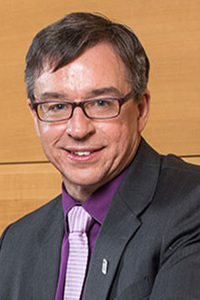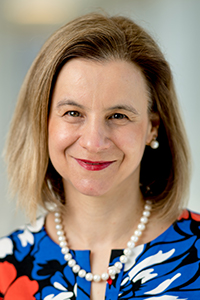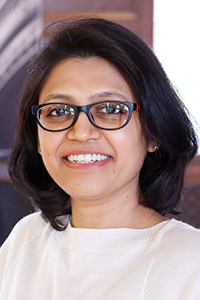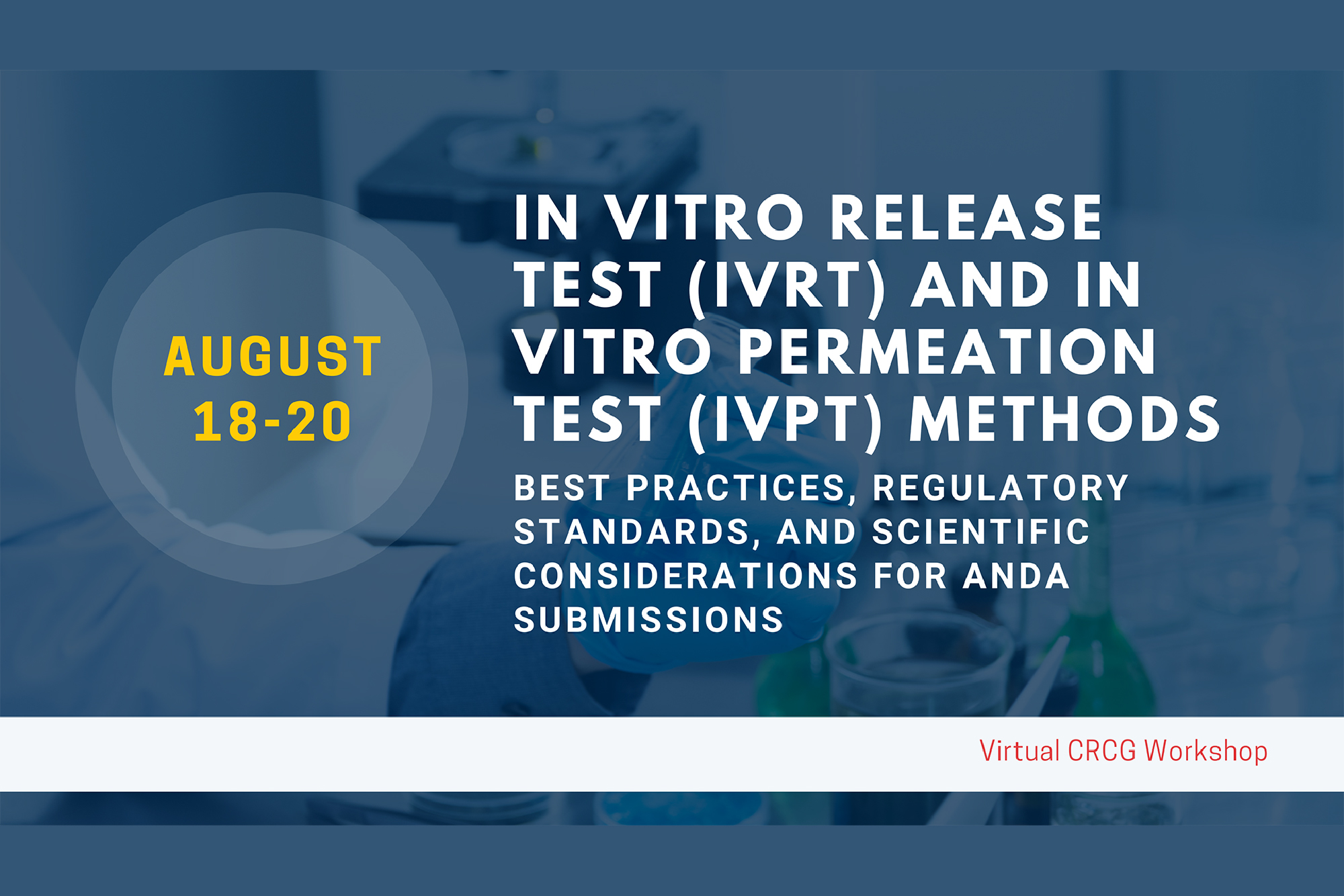Minding the ABC’s of Complex Generic Drugs: Access, Bioequivalence, and Complexity
New center strives to help develop generics and patients who need them
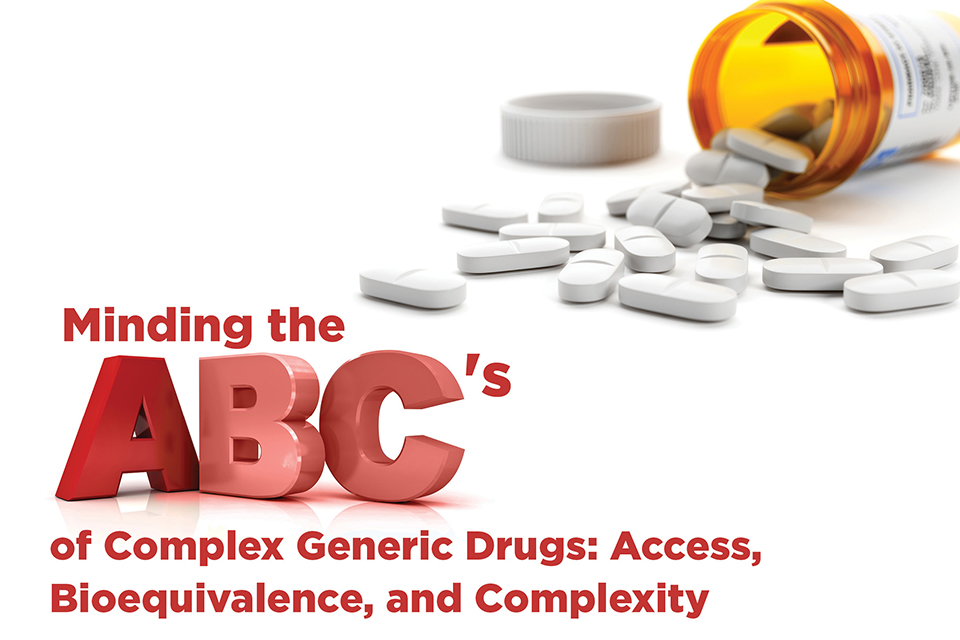
By Randolph Fillmore
January 1, 2022
Offering consumers better access as well as lower costs for generic versions of their important medications is quite a challenge. So, the University of Maryland School of Pharmacy didn’t tackle it alone. Its experts joined with those at the University of Michigan College of Pharmacy to form a joint Center for Research on Complex Generics (CRCG).
Will the 24-person research team be successful? The U.S. Food and Drug Administration (FDA) has invested $5 million in the possibility.
By law, generic drugs must be made with the same active pharmaceutical ingredients as brand name drugs and be able to demonstrate bioequivalence, that two drug products are equivalent as to the rate and extent of absorption.
Generics also must have the same dosage, route of administration, and effectiveness as the brand name products. With these attributes, newly developed generic drugs usually do not have to repeat the long and expensive safety and efficacy clinical trials that the brand name drugs originally had to undergo to gain FDA approval. Because generic drugs cost less to produce, they should cost less in the market, thus improving access.
According to James Polli, PhD, the Ralph F. Shangraw/Noxell Endowed Professor in Industrial Pharmacy and Pharmaceutics at the University of Maryland School of Pharmacy, and co-director of CRCG, generics now account for 90 percent of the medications Americans purchase.
“The great majority of today’s generic drugs are non-complex medications,” explains Polli. “Once the patent on the innovator drug has expired, they are relatively easy for pharmaceutical companies to copy. However, some drugs do not have generic versions because their formulations are so complex that making generic forms proves too difficult.”
Polli also suggests that there has been a lack of know-how for designing and testing complex generic drugs and that developing them requires “too much work” for any single company to take on. Now there is hope CRCG will change the future of complex drug development and ultimately will facilitate more complex generic drugs reaching the market and the patients who need them.
According to FDA, CRCG aims to support the generic drug industry and other stakeholders by offering collaborative research and training through webinars, workshops, and laboratory projects to meet development needs, and a Complex Generics Scholars program, among other initiatives. The first of its kind, this cutting-edge center will stimulate innovative dialogue, disseminate information about current insights related to complex products and practices, and generate new knowledge in support of FDA’s mission to promote and protect the public health by increasing access to safe and effective generic medicines. Collaborating with the generics industry and its stakeholders through research initiatives, training programs, and other resources helps FDA to achieve this goal.
The development of complex generic pharmaceutical products is a key component of FDA’s Drug Competition Action Plan, and CRCG works closely with FDA’s Office of Generic Drugs (OGD). CRCG’s goals are:
- To facilitate communication among the center, OGD, and generic drug stakeholders and to provide training, research, and development necessary to implement regulatory requirements
- To promote the generic drug industry through workshops, webinars, and hands-on training
- To conduct collaborative research and instruction in testing and development techniques for making complex generics
“Our goal is to contribute expertise to the pre-competitive space of generic drug development,” Polli says. “This space is poorly developed, especially in terms of drug formulation and pharmacokinetics assessment — two areas perhaps too difficult and too risky for generic drug companies.”
- James Polli
- Anna Schwendeman
- Visha Krishnan
CRCG is co-directed by Polli and Anna Schwendeman, PhD, the William I. Higuchi Collegiate Professor of Pharmacy and an associate professor of pharmaceutical sciences at the University of Michigan College of Pharmacy. Faculty from both universities are involved.
“Our team of 24 researchers interfaces very well,” says Schwendeman, noting that the collaboration between faculty from both universities has been extensive in the past. “We have complementary expertise and strong synergy.”
Polli, a 1993 graduate of the Michigan College of Pharmacy, agrees.
“At Maryland, we have expertise in topical medications, metered dose inhalers, tablet formulation, and transdermal products. At Michigan, faculty have extensive experience in quantitative analysis, pharmacokinetics, and long-acting injectables,” he says.
CRCG faculty members at both institutions have extensive combined experience in the evaluation of complex drugs and also have advanced laboratory and training space from which to move projects forward by offering complex analytical assays as well as pharmaceutical development experience to the generic drug industry.
“Our research mission is of great importance,” says Schwendeman. “Through research, education, and communication, we will facilitate collaborative projects with industry and the FDA.”
CRCG’s research collaboration is the focus of the center’s manager, Visha Krishnan, PhD, who works directly with FDA and generic drug industry stakeholders to address key topics, challenges, and gaps in generic drug development. She also is responsible for the center’s communication, funding, and development strategies.
“I am thrilled to work with expert researchers and leaders at FDA, the universities of Michigan and Maryland, and industry to advance the goals of the center and promote development of complex generic pharmaceutical products,” explains Krishnan, whose PhD is in chemistry-chemical biology and who, prior to joining CRCG, worked in life science technology commercialization. “I manage the daily operations of the center, stakeholder engagements and partnerships, and special events, such as workshops and visiting scientist programs, which enhance critical knowledge exchange in generic drug development.”
The Maryland School of Pharmacy and the Michigan College of Pharmacy each have resources that can help industry move the development of complex generic drugs forward. Maryland has an Applied Pharmaceutics Lab, its Center for Translational Medicine, Mass Spectrometry Center, and Nuclear Magnetic Resonance Facility. Michigan offers the Proteins and Peptides Core, the Pharmacokinetics and Mass Spectrometry Core, and the Biointerfaces Institute.
CRCG’s 24 faculty members have expertise spanning:
- Nasal delivery devices and metered dose inhalers
- Tablet formation and mechanisms of controlled release
- Pharmacokinetics and pharmacodynamics
- Medicinal chemistry and translational medicine
- Long acting injectables and transdermal drugs
- Drug delivery and oral bioperformance assessment
- Bio-micro nano technology and molecular engineering
Improving Access and Outreach to Industry
According to Polli and Schwendeman, making complex analytical assays and pharmaceutical development expertise more accessible to the generic industry will lead to more rapid approvals of high-quality generic products.
However, what the generic industry needs to know to develop complex generics, and what kinds of drugs or combination devices they are interested in developing, was an early question in need of answering when the center was established in 2020. So CRCG hosted a virtual meeting with representatives of the generic drug industry. Participants were surveyed on their product interests and development needs.
Polli says the survey revealed that attendees were highly interested in formulations, pharmacokinetics, and modeling for attaining bioequivalence. Products they wanted to develop included complex injectables, drug-device combination products, nano materials, topical dermatological products, ophthalmic products, and nasal delivery products.
Polli is first to say that there are difficult steps and procedures involved in developing complex generics — especially regarding the best testing methods for demonstrating that a generic candidate shows bioequivalence to the innovator drug.
“Bioequivalence is more difficult to demonstrate than proving that one drug is clinically superior to another,” he says.
Manufacturing complex generic drugs also is more difficult than manufacturing non-complex generics.
“Chemistry, manufacturing, and controls are major concerns for generic drug companies,” Schwendeman explains. “Complex products with more than 10 ingredients are especially difficult to characterize. How these products are manufactured often affects their efficacy and safety.”
Bioequivalence Testing in the Spotlight
In August 2021, FDA and CRCG co-hosted a three-day virtual workshop titled “In Vitro Release Test (IVRT) and In Vitro Permeation Test (IVPT) Methods: Best Practices and Scientific Considerations for ANDA Submissions.” It included extensive bioequivalence testing methodology discussion and presentations from guest speakers with expertise in testing methods for developing generics for complex dermatological creams and transdermal patches.
The workshop was attended by more than 2,400 people who also learned about submitting Abbreviated New Drug Applications (ANDA) to FDA.
“One of the greatest challenges to the development of complex generics, as reported to FDA by industry and stakeholder feedback, is an uncertainty about how to implement scientific insights from generic drug research in a manner consistent with FDA’s regulatory expectations,” says Sam Raney, PhD, associate director for science within the Office of Research and Standards, Office of Generic Drugs in FDA’s Center for Drug Evaluation and Research. “This includes the development of suitable test procedures, study designs, model integrated evidence, or other matters impacting generic drug applications. CRCG plays a vital role in addressing these challenges by supporting FDA’s efforts to enhance research collaborations with the generic industry.
“For example, this year’s workshops are one way that FDA and CRCG are working to advance programs that stimulate scientific dialogue, disseminate current insights about complex generics, and generate new knowledge in support of FDA’s mission of increasing access to safe and effective generic medicines.”
Workshop topics included skin penetration, absorption, fresh vs. frozen skin samples for testing, normal and abnormal skin, human skin differentiation, bioavailability, dosing, solubility, and rates of drug diffusion and depletion.
Speakers also discussed pharmacokinetics — the movement of drugs through the body — and pharmacodynamics — the body’s biological response to drugs — as well as laboratory environmental conditions. Under discussion as well were quality management systems and the U.S. Pharmacopeia’s Chapter 172, which presents extensive details on the parameters, best practices, and requirements for testing semisolid, topical products for dermatological conditions.
“The IVRT/IVPT workshop was a nice kickoff for us,” says Polli. “It is great that many industrial scientists, particularly those who conduct IVRT/IVPT studies, contributed to workshop planning, presentations, training videos, and question-and-answer panels.”
Boosting Pre-Competitive Market Space and Future Plans
“There is direct business competition in the generic drug space, including with complex drug products,” says Polli. “That competition is healthy, although it may lead to ‘siloing’ of generic developers and generic drug development efforts.”
He and Schwendeman say all CRCG workshops will engage the generic drug industry and other stakeholders. Future workshops also will focus on understanding how mechanistic modeling and simulation can support generic product development and regulatory submissions. By hosting these workshops, FDA and CRCG leadership hope to drive further investment by the generic drug industry in mechanistic modeling and simulation and improve model-sharing among developers, industry, and FDA.
“There is a lack of appropriate models for developing complex generics,” Schwendeman explains. “There is also a lack of publications on expectations for modeling. Another issue is that many companies don’t have access to complicated equipment for modeling and testing.”
According to Schwendeman, CRCG recently funded two research projects on “Best Practices for Establishing the Suitability of a Model Integrated Approach to Demonstrate the Bioequivalence (BE) of Long Acting Injectable Products.” Awardees include researchers at Simulations Plus (Lixoft and Cognigen divisions), and the University of Maryland School of Pharmacy. In vivo BE studies for long acting injectable (LAI) drug products are challenging to conduct.
“Each group will develop best BE practices for LAI drug products that aim to support the development and evaluation of novel BE study designs,” says Schwendeman.
Polli sees CRCG’s training mission as pivotal to increasing the market’s number of complex generics.
“Where there may be a lack of knowledge on how to design testing, we try to fill this gap through our workshops and hands-on training,” concludes Polli. “Techniques and tools are important for determining pharmacokinetics and bioequivalence. So, we will make every effort to keep the focus on the needs of industry — from designing our workshops, to providing hands-on training, and offering other support efforts, such as the visiting scientist program at FDA.”

